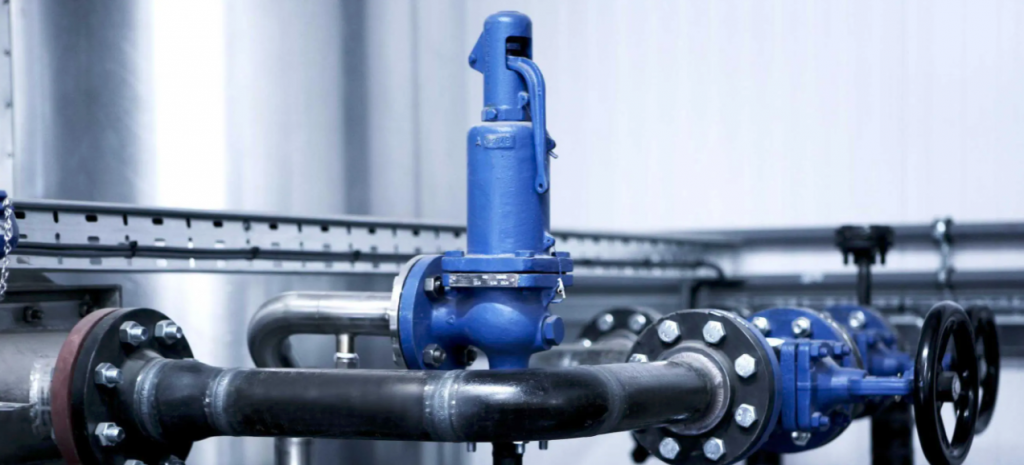Relief valves are critical components in various industrial systems, ensuring safety by releasing excess pressure. Knowing when to replace a relief valve is essential for maintaining system efficiency and preventing potential hazards. In this article, we will explore the signs and factors to consider when deciding on a valve replacement.

Understanding the Function of a Relief Valve
A relief valve is designed to control or limit the pressure in a system, preventing equipment failure. When pressure exceeds a preset limit, the valve opens, releasing the excess. This function is vital in industries such as oil and gas, chemical processing, and manufacturing, where high-pressure systems are common.
Importance of Regular Inspection
Regular inspection of relief valves is crucial. These inspections help identify wear and tear, corrosion, or any other factors that might affect the valve’s performance. A well-maintained valve ensures the safety and efficiency of the entire system.
Signs That Indicate Replacement
There are several signs indicating when to replace a relief valve. These include:
- Visible damage or corrosion
- Frequent leaking or opening
- Failure to open at set pressure
- Unusual noises during operation
Visible Damage or Corrosion
Corrosion or physical damage to the valve body is a clear sign that a replacement is necessary. This type of damage can compromise the valve’s ability to function properly, leading to potential safety risks.
Frequent Leaking or Opening
If a relief valve frequently leaks or opens without cause, it may indicate an issue with the valve’s internal components. This can be due to wear or a malfunction, both of which require a careful examination and possible replacement.
Failure to Open at Set Pressure
A primary function of a relief valve is to open when the pressure exceeds a certain point. If the valve fails to do so, it can result in system overpressure, potentially causing equipment damage or failure.
Unusual Noises During Operation
Unusual noises, such as rattling or hissing, may suggest a problem with the valve. These sounds often indicate internal damage or a misalignment, and addressing them promptly can prevent further issues.
How Often Should Relief Valves Be Replaced?
The frequency of relief valve replacement depends on several factors, including the type of system, operating conditions, and the manufacturer’s recommendations. However, a general guideline is to replace these valves every 2-5 years.
Consulting with Professionals
Consulting with professionals can provide valuable insights into the specific needs of your system. They can offer recommendations based on the valve’s condition and usage patterns, ensuring optimal performance.
Preventive Maintenance Tips
Engaging in preventive maintenance can extend the life of your relief valves. This includes regular cleaning, lubrication, and checking for any signs of wear or damage. For more on maintaining pressure relief valves, you can visit this ScienceDirect page.
Documentation and Record Keeping
Maintaining detailed records of inspections and replacements is essential. This information helps track the performance and condition of the valves over time, allowing for better decision-making.
Impact of Environmental Conditions
Environmental conditions, such as temperature and humidity, can affect the lifespan of a relief valve. For instance, valves in high-humidity areas may corrode faster, necessitating more frequent replacements.
Choosing the Right Replacement Valve
When replacing a relief valve, it’s important to choose one that matches the system’s specifications. Consider factors such as size, material, and pressure rating to ensure compatibility and safety.
Benefits of Timely Replacement
Replacing a relief valve promptly offers several benefits, including improved safety, enhanced system performance, and reduced risk of costly system failures.
Case Study: Successful Valve Replacement
In a recent case study, a manufacturing plant successfully replaced its aging relief valves, resulting in a 20% increase in operational efficiency and a significant reduction in maintenance costs.
Conclusion
Understanding when to replace a relief valve is vital for maintaining safety and efficiency in industrial systems. By paying attention to the signs and engaging in regular maintenance, you can ensure your valves perform optimally.

FAQ
1. How do I know if my relief valve is faulty?
Signs of a faulty relief valve include visible damage, frequent leaks, failure to open at set pressure, and unusual noises during operation.
2. Can I repair a relief valve instead of replacing it?
While some minor issues can be repaired, it’s often safer and more cost-effective to replace a faulty relief valve.
3. What factors influence the lifespan of a relief valve?
Factors such as environmental conditions, usage patterns, and maintenance practices can all influence the lifespan of a relief valve.
For more information on relief valves, visit this Wikipedia page.
This article contains affiliate links. We may earn a commission at no extra cost to you.



